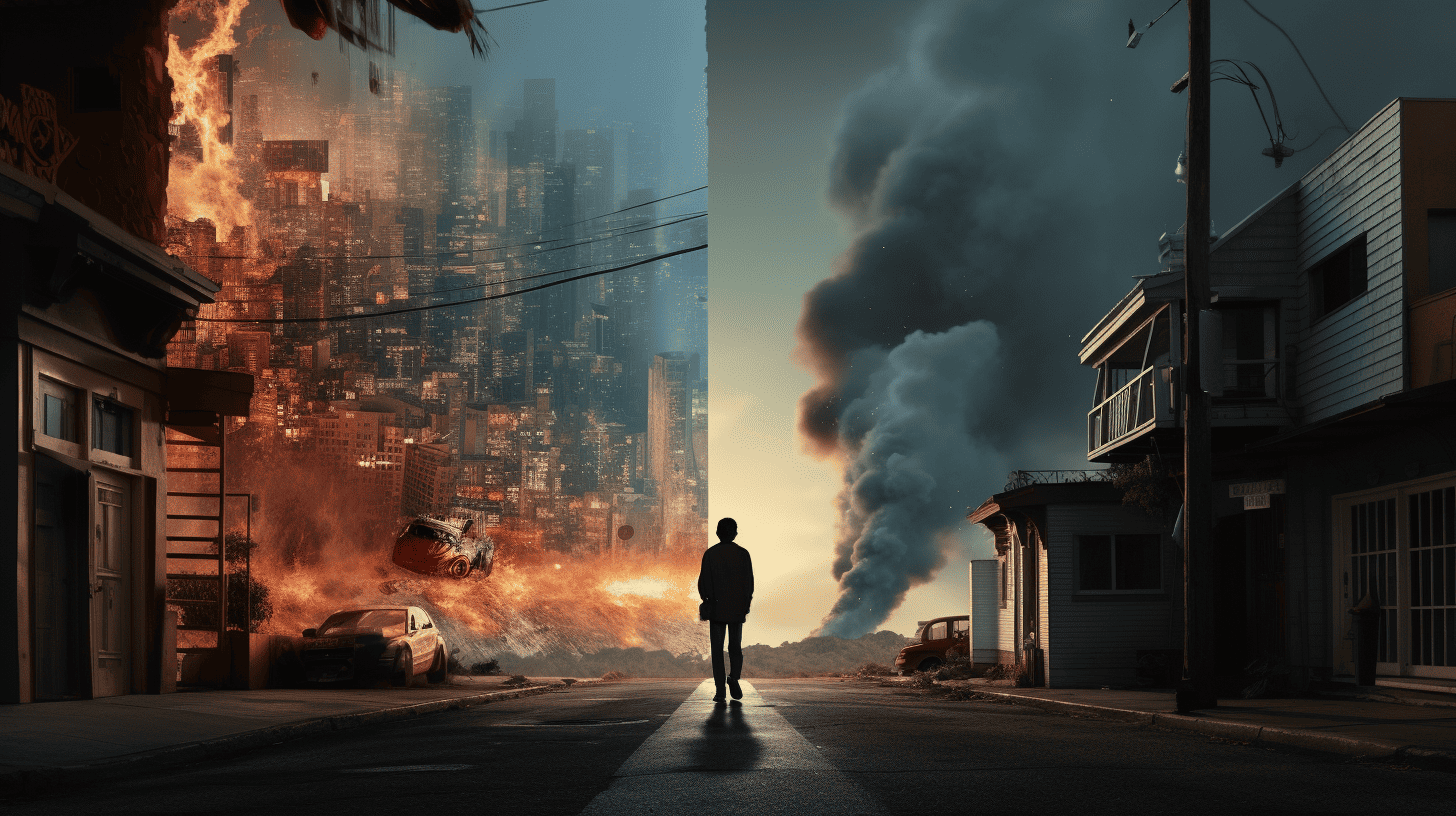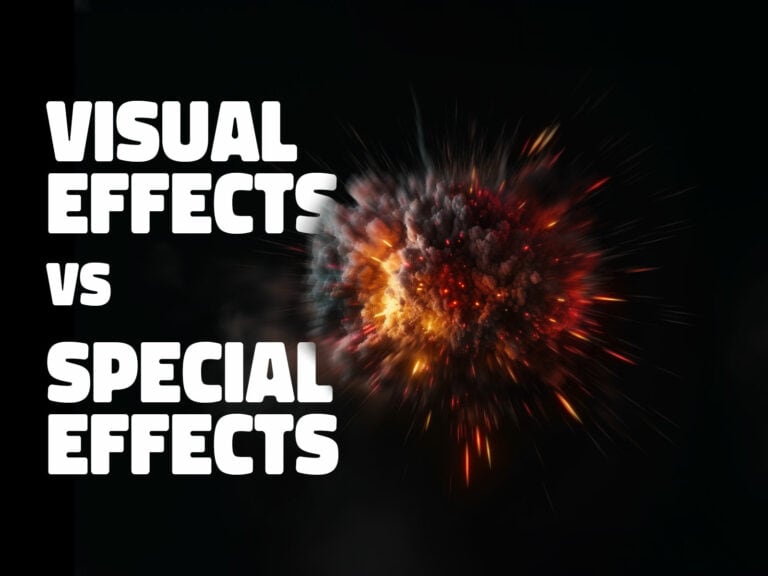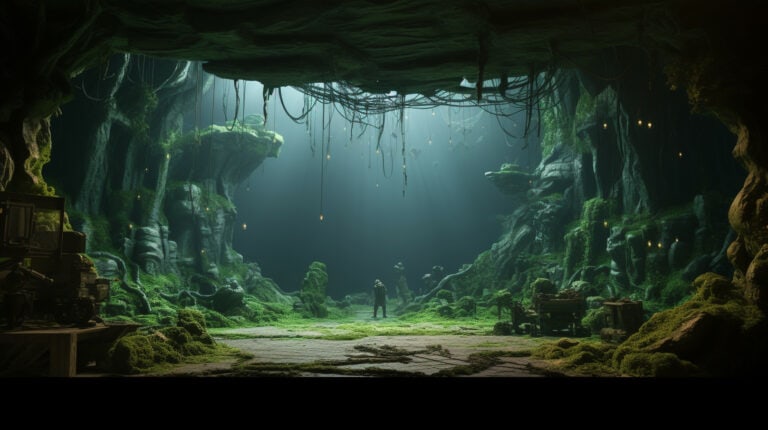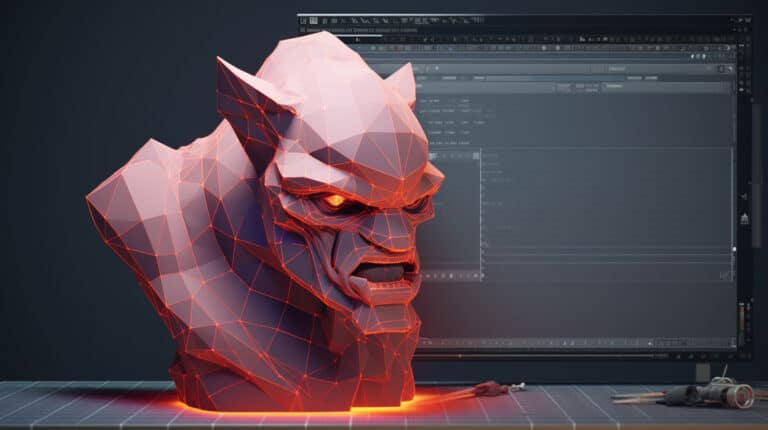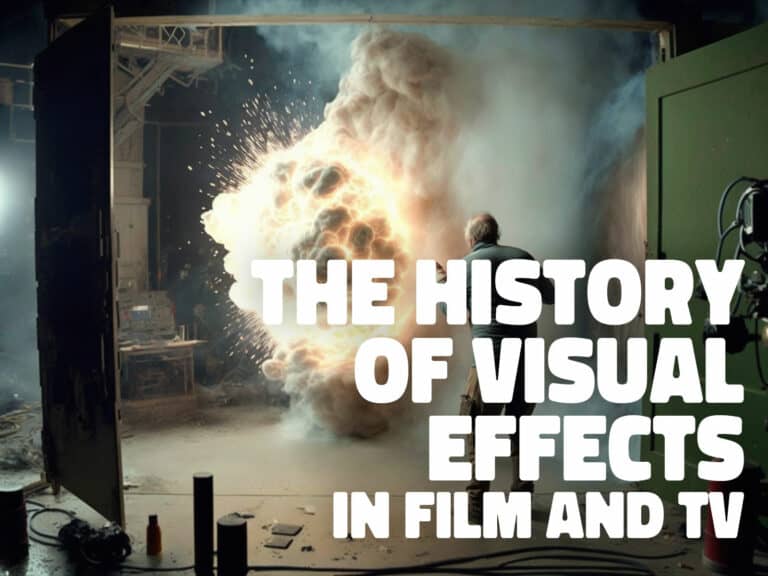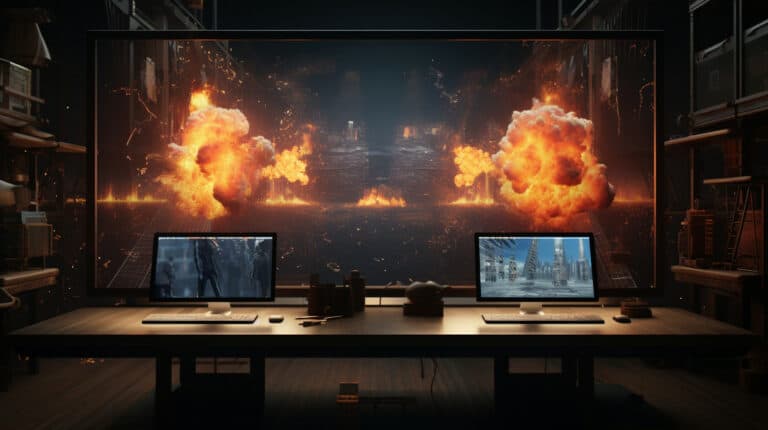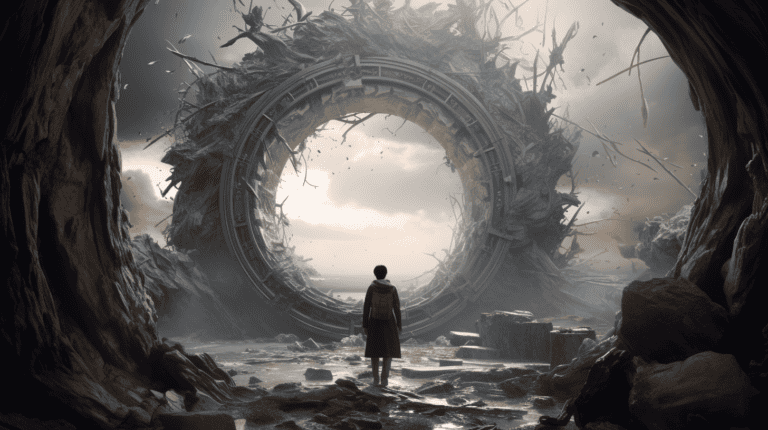CGI Vs Practical Effects: Understanding the Differences
Are you curious about the differences between CGI and practical effects? Then you’ve come to the right place.
In this article, we’ll explore the pros and cons of both, break down the terminology, and examine the relationship between visual and special effects.
Get ready to become an expert in no time!
Key Takeaways:
- Visual effects (VFX) and practical effects (PFX) are essential components in creating captivating films and television.
- Practical effects create tangible effects that can be experienced on set, while visual effects enhance scenes in post-production.
- Both practical effects and visual effects are integral to creating a believable cinematic experience.
- Practical effects provide realism and authenticity, while visual effects offer unlimited creative possibilities.
Practical Effects vs. VFX
You’ve probably heard about visual effects and practical effects and may be wondering what the difference is.
Well, visual effects and practical effects are both essential to creating the amazing worlds found in films and television, and understanding the differences between the two can help you better appreciate all the hard work that goes into making them.
Let’s take a look.
Importance of CGI and practical effects in film and television
You can’t deny the importance of both visual effects and practical effects in film and television.
Visual effects (VFX) bring the impossible to life onscreen and allow filmmakers to create worlds and creatures beyond imagination.
Practical effects (PFX) utilize physical objects, actors, and props to create believable illusions.
Together, these special effects create an immersive experience for viewers.
VFX and PFX have a symbiotic relationship, where one complements the other.
Both are essential components for creating spellbinding, breathtaking films and television.
A brief overview of the differences between the two
Now that you understand the importance of both visual effects and practical effects in film and television let’s take a look at the differences between the two.
Practical effects are physical elements created for a scene, such as props and makeup.
Visual effects, on the other hand, are computer-generated imagery and special effects created in post-production.
Visual effects are used to enhance scenes and create something that looks more realistic or far-fetched.
Practical effects, however, are used to create a tangible effect that can be experienced on set.
Both visual and practical effects are integral to creating a believable and captivating cinematic experience.
What is the Difference Between Practical Effects and Visual Effects
Are you curious about the difference between practical effects and visual effects?
Let’s explore this exciting topic together and find out what sets them apart.
From the use of props to the use of computer-generated imagery, we’ll uncover the unique features of each.
Definition of practical effects
Are you curious about the difference between visual effects and practical effects?
Practical effects are created using physical elements rather than computer-generated imagery. From pyrotechnics to makeup, these techniques have been used in some of the most iconic films of all time.
Let’s explore the world of practical effects and discover the incredible artistry behind them.
Explanation of how practical effects are created using physical elements
When it comes to creating special effects, physical elements are the key to making practical effects. From miniature models and pyrotechnics to prosthetic makeup and animatronics, practical effects allow filmmakers to bring scenes to life without digital post-production. | Practical Effects | Visual Effects |
| :———————- | :——————– | :—————- |
|---|---|---|
| Prosthetic makeup | Digital compositing | Motion capture |
| Animatronics | Matte paintings | CGI |
| Pyrotechnics | Chroma keying | 3D animation |
Practical effects are powerful tools to create stunning visuals without breaking the bank.
Examples of practical effects in popular films
You’ve likely seen many examples of practical effects in popular films, from prosthetic makeup to pyrotechnics and animatronics. The use of practical effects, or SFX, are often combined with VFX to create breathtaking scenes.
From a burning building in ‘Backdraft’ to a slithering snake in ‘Raiders of the Lost Ark’, these effects have been used to create some iconic moments.
In the ‘Lord of the Rings’ trilogy, animatronics were used to bring Gollum to life, while ‘Apocalypse Now’ utilized pyrotechnics to create a battle scene.
Practical effects are a powerful tool, capable of creating immersive scenes that can captivate audiences.
Definition of visual effects
Visual effects, or VFX, are a digital artistic medium used to create stunning imagery on the big screen.
In contrast to practical effects, VFX are created entirely in post-production, and can bring a world of imagination to life.
From swooping dragons to floating cities, VFX are a powerful tool for filmmakers.
Explanation of how visual effects are created using digital technology
With modern technology, creating visual effects is now easier than ever before. VFX, CGI, and SFX are all used to create realistic effects. Computer-generated imagery can be used to create imaginary worlds, while special effects can be used to replicate explosions and other physical effects. Motion tracking, particle systems, and more are also used to create realistic visuals.
With a few clicks of a button, filmmakers can bring their imaginative worlds to life.
Transitioning into the next section, let’s discuss examples of visual effects in popular films.
Examples of visual effects in popular films
Exploring the differences between visual effects and practical effects, let’s take a look at some examples of visual effects in popular films:
- Visual Effects:
- `Avatar` features computer-generated creatures, landscapes, and environments.
- `Jurassic World` features digitally created dinosaurs and a digitally enhanced volcanic explosion.
- Special Effects:
- `Star Wars` contains physical effects such as explosions and pyrotechnics.
- `The Lord of the Rings` utilizes prosthetic make-up and miniature models.
The use of CGI, prosthetics, and pyrotechnics allows films to create unique and captivating visuals.
Visual Effects vs Practical Effects: Pros and Cons
When it comes to choosing between visual effects and practical effects for your next project, it’s important to consider both their advantages and drawbacks.
Visual effects offer a wide range of possibilities for creating stunning and realistic visuals. They allow you to bring to life anything that you can imagine, whether it’s a fantastical creature or an epic battle scene. With the advancements in technology, visual effects have become more accessible and affordable than ever before. They also offer flexibility in post-production, allowing you to make changes and adjustments to the visuals until they meet your vision.
However, visual effects also come with their own set of challenges. They can be time-consuming and require a team of skilled artists to create the desired effects. Additionally, they can be costly, especially if you want high-quality and detailed visuals. It’s also important to note that relying too heavily on visual effects can sometimes result in a loss of authenticity and a disconnect with the audience.
On the other hand, practical effects involve creating effects physically on set without relying on post-production techniques. This can include using props, makeup, animatronics, or stunt work to achieve the desired effect. Practical effects can provide a sense of realism and tangibility that is often difficult to replicate with visual effects alone. They can also create a more immersive experience for both the actors and the audience.
However, practical effects also have their limitations. They can be more time-consuming and require careful planning and coordination to execute successfully. They may also be limited by physical constraints and may not be suitable for every effect or scenario. Additionally, practical effects can be more expensive, especially if they require specialized equipment or highly skilled professionals.
Advantages of practical effects
You’ve seen it, you’ve loved it, and you know why: practical effects create an unbeatable level of realism and authenticity to your favorite films. They bring a tangible and physical presence to the screen. They allow actors to interact directly with their environment.
In short, practical effects can be a game-changer in film production.
Realism and authenticity
When it comes to realism and authenticity in movies and television, you can’t beat the advantages of practical effects. Practical effects use real-world objects and physical processes to create illusions. These can include animatronics, robots, puppets, props, costumes, and models.
On the other hand, visual effects are created digitally in post-production. They use special effects to create a more realistic and believable image.
Both practical and visual effects have their pros and cons. However, when it comes to realism and authenticity, practical effects are the clear winner.
Tangible and physical presence
One of the biggest advantages of using practical effects is the tangible and physical presence they bring to a scene, which visual effects often can’t replicate. Special effects make scenes come alive through props, costumes, makeup, and more, creating a realism that can’t be achieved through digital manipulation alone.
Practical effects also allow actors to use their bodies and physicality to convey emotion, something that’s lost when using only visual effects.
For the ultimate in realism and authenticity, practical effects are the way to go.
Interaction with actors and environment
Interacting with actors and the environment is one of the major advantages of using practical effects over visual effects. Practical effects provide tangible and realistic interactions with actors and the environment, allowing for spontaneous reactions, unscripted dialogue, dynamic camera angles, organic reactions, natural lighting, and unanticipated special effects.
Such advantages make practical effects a more dynamic and immersive experience.
Transitioning to a discussion about the advantages of visual effects will further highlight the differences between the two.
Advantages of visual effects
You may not believe it, but visual effects can be extremely advantageous! They offer unlimited creative possibilities, cost-effectiveness, and the power to create impossible scenarios.
Unlimited creative possibilities
With the expansive range of possibilities offered by visual effects, you can create realistic and imaginative scenes that would otherwise be impossible to realize with practical effects alone. Here are some of the advantages:
- Visual Effects:
- Offer unlimited creative possibilities
- Utilize special effects
- Practical Effects:
- Incorporate the use of physical materials
- Provide a hands-on approach to filmmaking
Visual effects allow you to explore new realms of storytelling, creating stunning visuals and special effects that are simply not possible with practical effects.
Cost-effectiveness and time efficiency
When it comes to cost-effectiveness and time efficiency, visual effects offer a significant advantage over practical effects.
Visual Effects (VFX) and Computer Generated Imagery (CGI) can be created quickly and cost-effectively, enabling filmmakers to create complex visuals that would otherwise be too costly or dangerous. VFX and CGI are also more efficient in terms of time, allowing filmmakers to create stunning visuals with minimal time and resources.
Special effects (practical effects) can be more costly and time-consuming, but they can also create a more realistic effect. In the end, it comes down to the filmmaker’s preferences and budget.
Visual effects vs special effects is a trade-off between cost-effectiveness and time efficiency, but the ability to create impossible or dangerous scenarios is unparalleled.
Ability to create impossible or dangerous scenarios
Building on the idea of cost-effectiveness and time efficiency, one of the biggest advantages of visual effects is its ability to create impossible or dangerous scenarios that would be impossible or too dangerous to do practically.
VFX allows us to:
- Create lifelike creatures and environments: *CGI* can be used to create anything from mythical creatures to futuristic cities.
- Bring ideas to life: *SFX* can be used to bring to life any ideas that would be too dangerous or difficult to do in real life.
- Push storytelling boundaries: VFX can be used to bring imaginative stories to life, pushing the boundaries of what a story can be.
VFX provides an almost limitless canvas to create anything imaginable, making the impossible possible.
Disadvantages of practical effects
You may be surprised to learn that practical effects, while often giving off a more realistic aesthetic, come with their own set of disadvantages.
These include limitations in creating certain effects, cost and time constraints, and difficulty in achieving consistency.
As such, it’s important to consider these factors before choosing a type of effect.
Limitations in creating certain effects
When it comes to practical effects, one of the major disadvantages is that it often requires a significant amount of time and resources to create the desired effect. This can limit what can be achieved in post-production, such as:
- VFX:
- Special effects can be costly and difficult to achieve with CGI.
- The level of realism is also limited.
- SFX:
- Limited in terms of the scope of what can be produced.
- May be difficult to achieve certain effects without the right equipment.
Cost and time constraints
In addition to the difficulty of achieving certain effects, practical effects can also be cost-prohibitive and time-consuming. VFX, CGI, and SFX require costly equipment and highly-skilled technicians, whereas practical effects are usually cheaper and faster to execute.
However, practical effects can often require multiple takes to get the desired result, and can be less reliable due to environmental conditions. Consequently, it’s important to weigh the pros and cons of each option before committing to a particular approach.
Difficulty in achieving consistency
One disadvantage of practical effects is the difficulty in achieving consistency. Due to environmental conditions and multiple takes, the results can often be less accurate than those of visual effects. Specifically, vfx vs cgi vs sfx can be difficult to replicate and match with practical effects.
For example, visual effects can allow for more precise control of lighting, camera angles, and the environment, making it easier to create a consistent look. Special effects, such as explosions, can also be difficult to reproduce with practical effects.
As a result, filmmakers often rely on visual effects to ensure a consistent look and feel.
Disadvantages of visual effects
Are you aware of the potential drawbacks of using visual effects?
From creating an artificial or unrealistic appearance to relying too heavily on technology, there are a few key disadvantages to consider.
Not to mention, the lack of physicality and tangibility that’s often associated with visual effects.
Potential for unrealistic or artificial appearance
When it comes to visual effects, one of the main disadvantages is their potential to create an unrealistic or artificial appearance. Visual effects are often used to create scenes or characters that would otherwise be impossible to achieve.
- Visual Effects:
- No physical limitations
- Specialized computer software
Practical Effects, on the other hand, involve the use of physical objects, real-life sets, and props. The difference between practical effects and visual effects can be difficult to understand, but the choice between the two can make a huge difference in the final product.
Overreliance on technology
Often, visual effects can lead to an overreliance on technology, resulting in a lack of realism in the final product. | Often, practical effects are more tangible, providing a more believable result.
| Movies | Television | Video Games |
| Avatar | Stranger Things | Grand Theft Auto |
| The Lion King | Game of Thrones | Red Dead Redemption |
| The Matrix | Westworld | Spider-Man |
CGI is a powerful tool for creating stunning visuals. It has revolutionized the entertainment industry and is now a major part of storytelling. Next, let’s discuss the definition of SFX (special effects).
Definition of SFX (Special Effects)
Do you know the difference between visual and practical effects?
Special effects (SFX) is the overarching term used to refer to both of these techniques.
Let’s explore the various SFX techniques and what makes them unique.
Explanation of how SFX is a broader term that includes both practical and visual effects
You may have heard of special effects (SFX), which encompasses both practical and visual effects.
VFX includes computer generated images, animations, and other digital art techniques.
Practical effects involve physical methods, such as makeup, prosthetics, costumes, and other real-world techniques. SFX represents a broad term that encompasses both.
With its creative and innovative approach, SFX brings a unique level of realism and impact to films.
It’s an art form that enhances storytelling, creating a captivating experience for viewers.
Examples of SFX techniques
Now let’s take a look at some of the most popular SFX techniques, such as VFX, CGI, and SFX.
VFX stands for Visual Effects, CGI for Computer Generated Imagery, and SFX for Special Effects.
VFX is used to create realistic scenes using digital imagery, CGI to create realistic animations, and SFX involves the use of physical elements.
Both VFX and CGI can be used to create a range of effects, from fire and explosions to lightning and rain, while SFX is used to create more traditional effects such as explosions, fire, smoke, and other physical effects.
All three techniques are powerful tools used to create a range of special effects.
With these examples in mind, let’s now explore the differences between practical and visual effects.
Practical VFX vs CGI: Which is Better
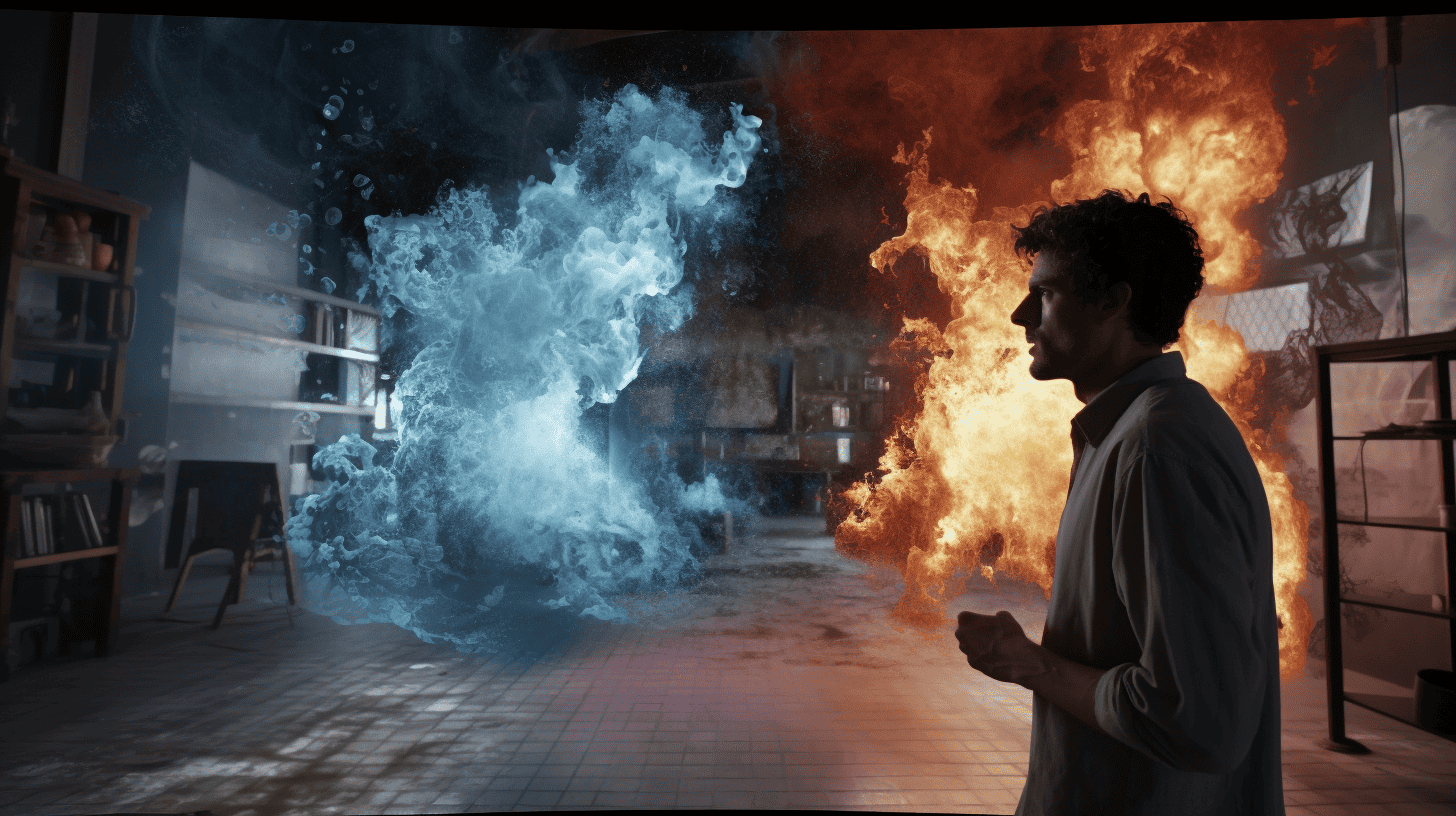
Are you wondering which type of visual effects is better, practical VFX or CGI?
Let’s explore the differences between the two and consider the realism, cost, time, and creative possibilities of each to determine which is the best option.
Comparison of practical VFX and CGI in terms of realism
Have you ever wondered which provides more realistic effects: practical VFX or CGI?
While it’s often argued that one is better than the other, many films have successfully blended the two together to create stunning visual effects.
Let’s explore some of the best examples of this combination.
Examples of films that successfully blend practical and digital effects
How effectively do films blend practical and digital effects to create a realistic experience?
Practical VFX and CGI are often used together to produce stunning visuals. Examples of films that use this combination effectively include:
- Jurassic Park
- Animatronics and computer generated graphics were used to bring the dinosaurs to life.
- The T-Rex and raptors were created using a mix of puppets and CGI.
- The Dilophosaurus was created using full-scale animatronic puppets.
- Avatar
- A combination of motion capture and computer generated graphics were used to create the alien world of Pandora.
- Motion capture technology was used to capture the movements of the actors.
- Computer generated graphics were used to create the lush environment of Pandora.
Comparison of practical VFX and CGI in terms of cost and time
Considering practical VFX and CGI for your film project?
It’s important to understand the cost and time implications of each approach.
Let’s compare the two methods to get a better idea of which one will be the most suitable for your film.
Analysis of the financial and time-related aspects of each approach
Comparing the financial and time-related implications of practical VFX and CGI can help you decide which approach is better for your project.
• Practical VFX:
• Cost: Low-cost, short-term expenditure.
• Time: Longer time commitment for setup and shooting.
• CGI:
• Cost: High-cost, long-term expenditure.
• Time: Quicker turnaround time than practical VFX.
Comparison of practical VFX and CGI in terms of creative possibilities
Have you ever wondered what the difference is between practical effects and visual effects? Both offer creative possibilities, but in different ways.
Let’s take a look at the unique advantages and disadvantages of each approach to determine which one is best for your next project.
Exploration of the limitations and advantages of each technique
Frequently, you may find yourself asking which type of effect, practical or CGI, offers more creative possibilities for your project.
Practical VFX provides limitations such as:
- Cost and time constraints
- Accessible materials
- Physical capabilities
CGI, on the other hand, offers advantages such as:
- Endless creative options
- Ability to create the impossible
- Cost and time savings
Ultimately, the choice between the two depends on your goals and the resources you have available.
Visual Effects and Special Effects: Understanding the Relationship
Do you ever wonder how visual effects and special effects work together to create the amazing movie scenes we love? Understanding the difference between the two is key to appreciating the stunning visuals we see on the big screen.
Let’s explore the relationship between these two movie magic techniques!
Definition of visual effects and special effects
Have you ever heard the terms ‘visual effects’ and ‘special effects’ and wondered what the difference is?
Visual effects (VFX) and special effects (SFX) are words that are often used interchangeably, but there are key distinctions between the two that can be hard to understand.
In this article, we’ll explore the differences between VFX and SFX and how they work together to create the incredible imagery we see on screen.
Explanation of how the terms are often used interchangeably
Interchangeably using visual effects and special effects is a common mistake.
Visual effects are created in post-production, using computer-generated imagery.
Special effects, on the other hand, are created during production on-set.
- Visual Effects:
- Computer-generated imagery
- Post-production
- Special Effects:
- Physical props
- On-set production
Clarification of the specific differences between the two
You’ve probably heard of both visual effects and practical effects, but do you know the differences between them? Visual effects (VFX) are created in post-production and are digitally generated, while practical effects (PFX) are physical objects and materials used on set.
| VFX | PFX |
|---|---|
| Digitally Generated | Physical Objects and Materials |
| Post-Production | On-Set |
VFX and PFX work together to create an immersive movie experience.
Examples of visual effects and special effects working together
Ready to explore the ways in which visual effects and special effects can work together?
Let’s take a look at some films that have blended practical and digital effects in a seamless and stunning fashion.
From heart-stopping action sequences to awe-inspiring landscapes, these movies prove that the two can be a winning combination.
Analysis of films that combine practical and digital effects seamlessly
With today’s technology, there are countless films that have successfully combined practical and visual effects to create stunning results. Here are five examples:
- The Lord of the Rings: Vivid sets, intricate costumes, and CGI blended to create a rich fantasy world.
- Avatar: Practical props and costumes mixed with CGI to bring the alien world of Pandora to life.
- Mad Max: Fury Road: Digital effects blended with stunt work and practical effects to create a post-apocalyptic landscape.
- Star Wars: The Last Jedi: Practical models and sets blended with CGI to create a futuristic universe.
- Blade Runner 2049: Groundbreaking practical effects and CGI united to create a dystopian future.
These films prove that when used together, visual and practical effects can create stunning results.
Visual Effects vs Special Effects: Differentiating the Two
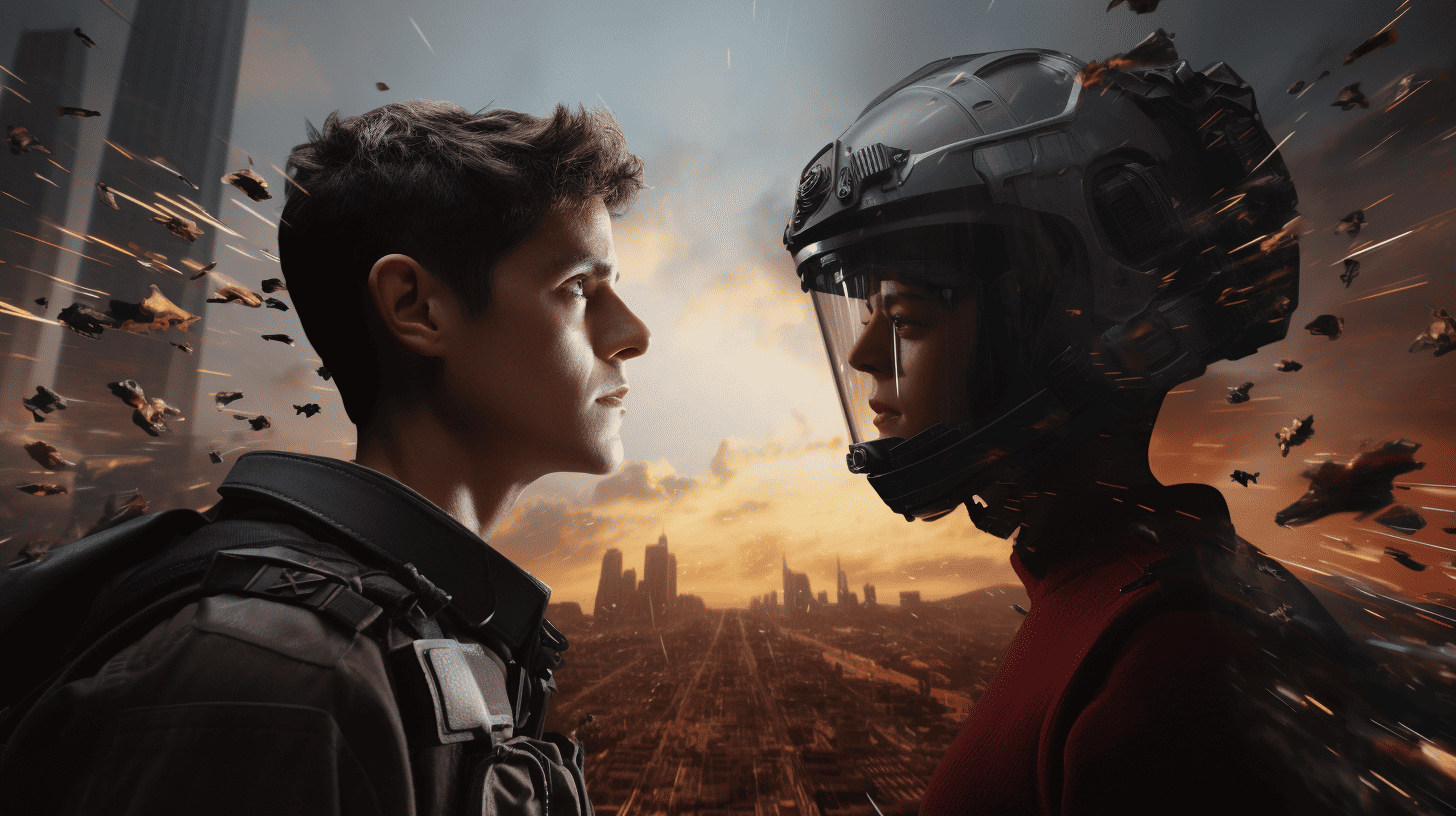
Do you know the difference between visual effects and special effects?
Let’s explore the distinctiveness of each technique, and discover through examples how filmmakers use them to create amazing cinematic experiences.
Explanation of the specific differences between visual effects and special effects
Do you understand the difference between visual effects and special effects?
Let’s explore the techniques used and the outcomes achieved by each to better understand their distinct roles in creating cinematic magic.
With the right knowledge, you’ll be able to appreciate the craftsmanship and hard work of those behind the scenes.
Focus on the techniques used and the outcomes achieved
You’ve probably heard of visual effects and special effects, but do you know the key differences between them?
Visual effects rely on CGI, while practical effects are physical.
Visual effects have wider potential to create scenes, while practical effects are more tangible and real.
- Visual Effects:
- Use CGI
- Create entire scenes
- Practical Effects:
- Physical
- More tangible and real
Examples of films that heavily rely on visual effects or special effects
Have you ever wondered what sets a blockbuster movie apart from a mediocre one?
It often comes down to the use of visual and practical effects.
Let’s take a closer look at how these two approaches contribute to the overall viewing experience.
Analysis of how each approach contributes to the overall visual experience
Comparing visual effects and practical effects can help you understand how each contributes to the overall visual experience in movies.
Visual effects:
- Add elements to a scene
- Enhance existing elements
Practical effects:
- Use physical objects
- Creates a sense of reality
Both offer unique ways to bring a story to life, and when used together, can create a powerful, immersive experience.
Recap of the key differences between practical effects and visual effects
By now, you’ve seen the distinct differences between your practical and visual effects. Here’s a quick recap to help you remember:
- Practical Effects:
- Physical elements used to create an effect
- Results are real, tactile, and often unpredictable
- Created on-set and require a great deal of preparation
- Visual Effects:
- Digital elements used to create an effect
- Results are predictable and controllable
- Created in post-production, often with the aid of software
Importance of understanding and appreciating both techniques in the film industry
Appreciating both visual and practical effects is essential for success in the film industry. Knowing the strengths and weaknesses of each technique, and understanding when to use one over the other, is critical in creating a cinematic experience that resonates with audiences.
Visual effects can be used to enhance a scene, create new worlds, and push the boundaries of the imagination. Practical effects can bring a greater sense of realism to a scene and make it feel more tangible.
Both techniques have their benefits and drawbacks, but when used together they can create a powerful cinematic experience that audiences will remember.
To conclude, understanding and appreciating both visual and practical effects is essential for success in the film industry and is the key to creating unforgettable cinematic experiences.
This leads us now to the final thoughts on the future of visual effects and practical effects in filmmaking.
Final thoughts on the future of visual effects and practical effects in filmmaking
Your appreciation of both visual and practical effects is critical for the future of filmmaking. From the technical aspects of production to the storytelling aspects of art, the combination of both techniques can create a truly mesmerizing cinematic experience.
- Visual Effects:
- Enhances the scene with realistic elements
- Adds a layer of complexity to the story
- Practical Effects:
- Crafting real-world objects to create a believable environment
- Immersing the audience in a tangible world
The future of filmmaking will be driven by the creative possibilities presented by the collaboration between practical and visual effects. As technology advances, directors have more control over their story and have the opportunity to bring their vision to life. As the industry continues to grow, understanding and appreciating both techniques is essential for creating the most effective and powerful films.
Frequently Asked Questions
What Is the Cost Difference Between Visual Effects and Practical Effects?
The cost difference between visual and practical effects varies, depending on the type of project. Generally, visual effects cost more due to the amount of time and expertise needed. However, practical effects can be just as impactful.
How Does the Technology of Visual Effects Compare to That of Practical Effects?
You may wonder how visual effects technology compares to practical effects technology. Visual effects are often created through computer-generated graphics, while practical effects are created using physical materials, such as makeup and props. Both have their advantages and disadvantages.
Are There Any Physical Limitations When Using Visual Effects Instead of Practical Effects?
Yes, there are physical limitations when using visual effects. They can be difficult to reconcile with reality, and require significant time and resources. You may not be able to create the desired outcome without practical effects.
Are There Any Environmental or Health and Safety Considerations When Using Visual Effects?
Yes, when using visual effects there are environmental and health and safety considerations. Considerations such as energy usage, emissions, hazardous materials, and worker safety should be taken into account.
How Long Does It Typically Take to Create a Visual Effect Compared to a Practical Effect?
Creating visual effects usually takes longer than creating practical effects. It’s often more complex and time-consuming, but the results can be stunning!
Conclusion
Choosing between practical effects and visual effects can be tough, but understanding the differences, pros, cons, terminology, and relationship between them can help make the decision easier.
Both have their place in the world of filmmaking and can be used to create truly magical and mesmerizing stories.
In the end, it’s up to the filmmaker to decide which effects are best for their project.

